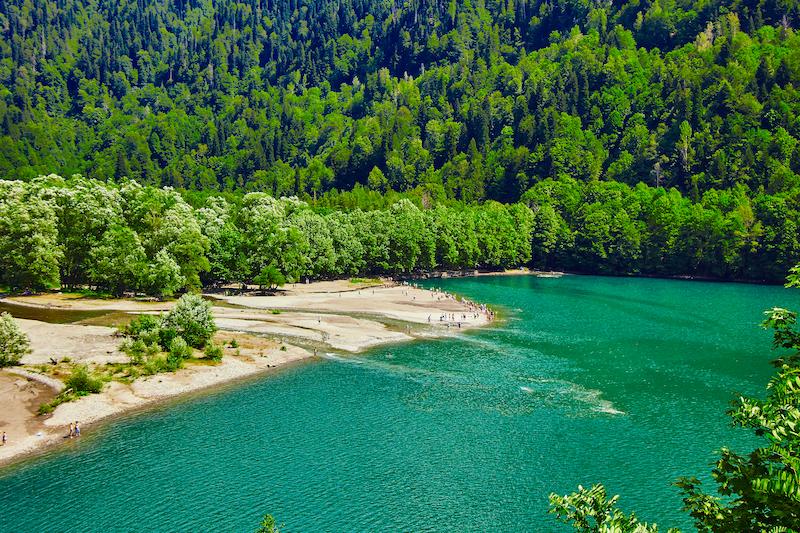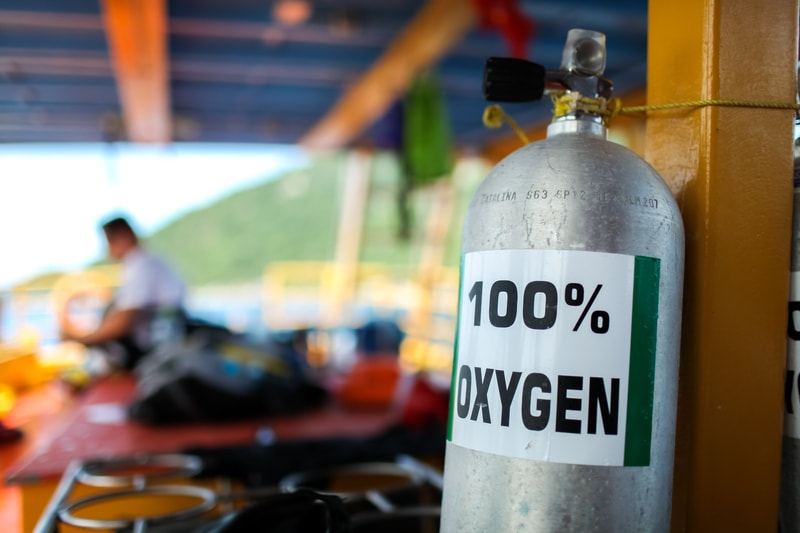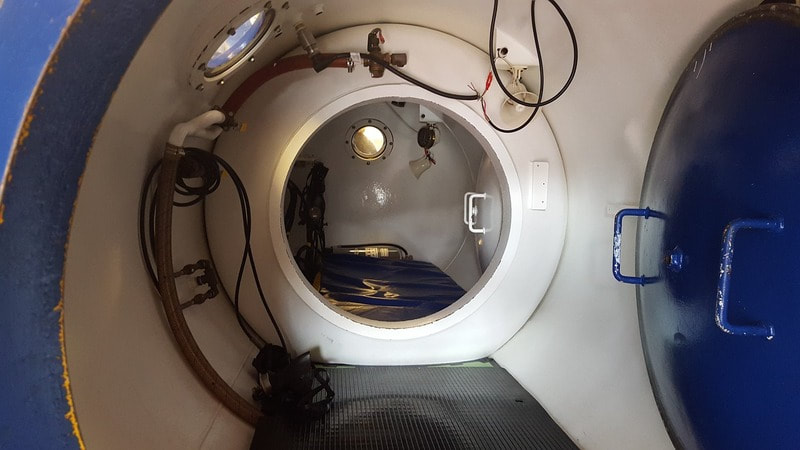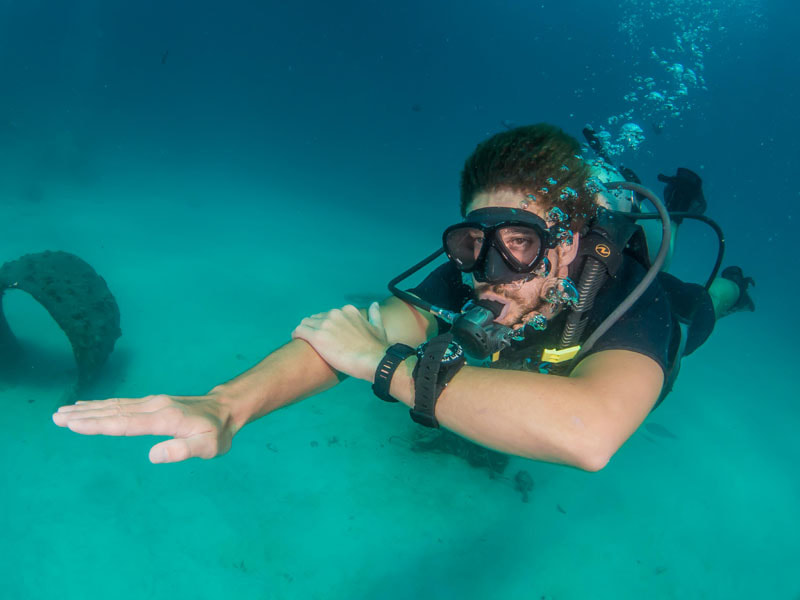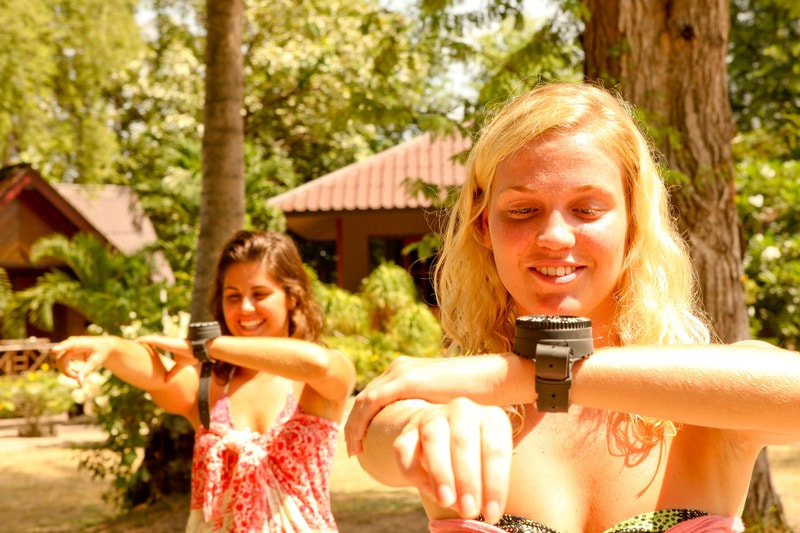PADI Open Water Diver Manual Answers Chapter 5 - Knowledge Review
PADI Open Water Diver Manual Answers Chapter 5 fully explained. After this you have completed the PADI Open Water Knowledge Review 5 Answers and you are ready for the exam.
In PADI Open Water Diver Manual Answers Chapter 5 we focus on dive planning. In chapter 5 we will cover dive planning, navigation, flying after diving, altitude, and more DCS scenarios.
Question 1 - PADI Open Water Diver Manual Answers Chapter 5
Question 1: What devices can you use to plan your dives?
You can plan your dives using a dive computer, PADI RDP Table or the PADI eRDPML.
You can plan your dives using a dive computer, PADI RDP Table or the PADI eRDPML.
You can use all of the above to plan your surface interval and get the most out of your receptive dives while staying within the limits.
Question 2 - PADI Open Water Diver Manual Answers Chapter 5
Question 2: Can you use normal dive tables when diving at altitude?
At altitude, the surrounding pressure is less than at sea level. Most decompression models are based on surfacing at sea level.
At altitude, the surrounding pressure is less than at sea level. Most decompression models are based on surfacing at sea level.
Going to altitude after a dive can cause dissolved nitrogen to come out of the solution faster – increasing the risk of DCS. Follow altitude diving procedures, or wait before ascending to altitude after a dive.
Question 3 - PADI Open Water Knowledge Review 5 Answers
Question 3: What are the flying after diving recommendations after scuba diving?
According to the RDP the Flying after diving recommendation for no stop dives:
According to the RDP the Flying after diving recommendation for no stop dives:
- Single dives: minimum preflight surface interval of 12 hours is suggested.
- Repetitive dives or multiday dives: minimum preflight surface interval of 18 hours is suggested.
- Dives requiring emergency decompression stops: minimum preflight surface interval greater than 18 hours is suggested.
Question 4 - PADI Open Water Diver Manual Answers Chapter 5
Question 4: 300 meters above sea level is altitude diving.
Altitude and flying after diving: Reduced atmospheric pressure at altitude increases the pressure gradient (the pressure difference) between the gases dissolved in the tissues and ambient pressure.
To learn more about attitude diving we recommend you to take the PADI Altitude Specialty course.
Altitude and flying after diving: Reduced atmospheric pressure at altitude increases the pressure gradient (the pressure difference) between the gases dissolved in the tissues and ambient pressure.
To learn more about attitude diving we recommend you to take the PADI Altitude Specialty course.
Question 5 - PADI Open Water Diver Manual Answers Chapter 5
Question 5: What are the recommendations for planning your dive when you were cold, stressed, or had to exercise?
Using the RDP dive tables you should plan your dive 4 meters deeper than actual when you are cold or exercise a lot during the dive.
Try to prevent diving in conditions where you can get too cold, wear proper exposure suits, and always dive a slow as possible. Otherwise, you risk DCS.
Using the RDP dive tables you should plan your dive 4 meters deeper than actual when you are cold or exercise a lot during the dive.
Try to prevent diving in conditions where you can get too cold, wear proper exposure suits, and always dive a slow as possible. Otherwise, you risk DCS.
Question 6 - PADI Open Water Knowledge Review 5 Answers
Question 6: What should you do when you exceed your NDL?
According to the RDP dive planner if you exceed the limit by no more than 5 minutes, stop at 5 m/15 ft for at least 8 minutes and more than 5 minutes, stop at 5 m/15 ft for at least 15 minutes.
According to the RDP dive planner if you exceed the limit by no more than 5 minutes, stop at 5 m/15 ft for at least 8 minutes and more than 5 minutes, stop at 5 m/15 ft for at least 15 minutes.
If you are using a dive computer then follow your emergency decompression recommendations on your computer.
Question 7 - PADI Open Water Diver Manual Answers Chapter 5
Question 7: You went over your NDL, but forget to do an emergency decompression stop. You realize this when your surface. What should you do?
Not in all cases do you end up with DCS after missing a decompression stop. It is important however to stop scuba diving for at least 24 hours and monitor yourself for DCS symptoms.
Not in all cases do you end up with DCS after missing a decompression stop. It is important however to stop scuba diving for at least 24 hours and monitor yourself for DCS symptoms.
Your dive computer will most likely go into error mode for a limited time reminding you to not dive. When in doubt always seek advice from a dive physician.
Question 8 - PADI Open Water Diver Manual Answers Chapter 5
Question 8: What should you do when you run out of air during your emergency decompression stop?
Completing the decompression stop is important, but if you can’t stay underwater with no air. Try to stay as long as you can, but do surface when you get low on air. In some situations, you can use an emergency drop tank supplied by the boat.
Completing the decompression stop is important, but if you can’t stay underwater with no air. Try to stay as long as you can, but do surface when you get low on air. In some situations, you can use an emergency drop tank supplied by the boat.
Question 9 - PADI Open Water Knowledge Review 5 Answers
Question 9: What are the steps to help someone with decompression illness?
Oxygen is recommended for DCS first aid treatment because it may accelerate nitrogen elimination and raise blood oxygen levels, reduce limb pain, and reduce bubble size.
Administer oxygen to the patient, this helps to accelerate the nitrogen elimination from the tissues and raises blood oxygen levels. This assists tissues with blood flow that was reduced by bubble blockage.
Keep breathing patients lying level on the left side with the head supported in the recovery position. This helps to keep the airway clear if the patient vomits and also to ensure blood flow to the brain. Advise the patient not to sit up even during transport or if feeling better.
Lay a non-breathing patient on the back to provide rescue breathing, whilst also using the continuous flow with a pocket mask for rescue breaths if possible. Monitor the airway, breathing, circulation, and contact emergency medical care.
Oxygen is recommended for DCS first aid treatment because it may accelerate nitrogen elimination and raise blood oxygen levels, reduce limb pain, and reduce bubble size.
Administer oxygen to the patient, this helps to accelerate the nitrogen elimination from the tissues and raises blood oxygen levels. This assists tissues with blood flow that was reduced by bubble blockage.
Keep breathing patients lying level on the left side with the head supported in the recovery position. This helps to keep the airway clear if the patient vomits and also to ensure blood flow to the brain. Advise the patient not to sit up even during transport or if feeling better.
Lay a non-breathing patient on the back to provide rescue breathing, whilst also using the continuous flow with a pocket mask for rescue breaths if possible. Monitor the airway, breathing, circulation, and contact emergency medical care.
Question 10 - PADI Open Water Diver Manual Answers Chapter 5
Question 10: What is the treatment of decompression illness?
Recompression chamber treatment is required as this forces the bubbles in the patient’s body to a small size or back into solution. It alleviates symptoms by effectively removing the immediate cause.
Recompression chamber treatment is required as this forces the bubbles in the patient’s body to a small size or back into solution. It alleviates symptoms by effectively removing the immediate cause.
Never attempt recompression in the water due to the depths and times required and also the lack of access to necessary drugs. Additionally, putting the patient back into the water to recompress for less than the required time and depth will just make them worse.
Both DCS and lung overexpansion injuries require the same first aid, there’s no need to distinguish between them when providing care. Decompression illness/ DCI, therefore, refers to both DCS and lung overexpansion injuries as a single condition with respect to the emergency protocols and first aid.
Both DCS and lung overexpansion injuries require the same first aid, there’s no need to distinguish between them when providing care. Decompression illness/ DCI, therefore, refers to both DCS and lung overexpansion injuries as a single condition with respect to the emergency protocols and first aid.
Question 11 - PADI Open Water Diver Manual Answers Chapter 5
Question 11: What is gas narcosis and how to solve it?
Partial pressures of nitrogen and oxygen increase with depth. High concentrations of nitrogen in the nerve cells result in a type of euphoric, anesthetic effect. Susceptibility varies by the diver and physiological state during the dive.
It is typically subtle at this depth with slowed thinking, increased problem-solving times, a mild sense of euphoria or wellbeing. Other possible symptoms may include drowsiness, a false sense of security, poor judgment, lack of coordination, hallucination, and giddiness.
Narcotic effects will continue to increase with depth. Narcosis itself isn’t harmful, the concern is a diver’s reduced problem-solving ability and slower reaction times affect decisions relating to safety. Symptoms will decrease by simply ascending to shallower depths.
Partial pressures of nitrogen and oxygen increase with depth. High concentrations of nitrogen in the nerve cells result in a type of euphoric, anesthetic effect. Susceptibility varies by the diver and physiological state during the dive.
It is typically subtle at this depth with slowed thinking, increased problem-solving times, a mild sense of euphoria or wellbeing. Other possible symptoms may include drowsiness, a false sense of security, poor judgment, lack of coordination, hallucination, and giddiness.
Narcotic effects will continue to increase with depth. Narcosis itself isn’t harmful, the concern is a diver’s reduced problem-solving ability and slower reaction times affect decisions relating to safety. Symptoms will decrease by simply ascending to shallower depths.
Question 12 - PADI Open Water Knowledge Review 5 Answers
Question 12: How to use a compass and what is magnetic north?
The point of the needle helps you to determine where north is underwater and how to read the other information from the compass. Not only does a compass help you navigate, but it also helps in feeling more comfortable during a dive have a sense of direction.
The point of the needle helps you to determine where north is underwater and how to read the other information from the compass. Not only does a compass help you navigate, but it also helps in feeling more comfortable during a dive have a sense of direction.
Question 13 - PADI Open Water Diver Manual Answers Chapter 5
Question 13: How to set your underwater compass?
- Point the lubber line in the desired direction
- Let north needle settle on magnetic north
- Rotate the bezel until the index marks are over the north needle
Question 14 - PADI Open Water Diver Manual Answers Chapter 5
Question 14: What is the maximum depth for an Open Water Diver?
After completion of your PADI Open Water Diver certification, you can dive up to 18 meters of depth or shallower and in the same or better conditions that you have been trained in.
We highly recommend you to take the PADI Advanced Open Water Diver Course if you would like to dive deeper than 18 meters. This course is amazing, ask your instructor for more information.
Always review your PADI Open Water Diver Manual Answers Chapter 5 with a certified PADI Diving Instructor and PADI Dive Shop during your PADI Open Water Diver Course. Read full disclaimer here.
Continue to PADI Open Water Diver Skills list
After completion of your PADI Open Water Diver certification, you can dive up to 18 meters of depth or shallower and in the same or better conditions that you have been trained in.
We highly recommend you to take the PADI Advanced Open Water Diver Course if you would like to dive deeper than 18 meters. This course is amazing, ask your instructor for more information.
Always review your PADI Open Water Diver Manual Answers Chapter 5 with a certified PADI Diving Instructor and PADI Dive Shop during your PADI Open Water Diver Course. Read full disclaimer here.
Continue to PADI Open Water Diver Skills list
|
|
|
|
Marcel van den Berg
PADI Platinum Course Director
PADI Platinum Course Director
SCUBA DIVING TIPS
Privacy Policy
Disclaimer
As an Amazon Associate I earn from qualifying purchases.
All content on this website and URL are owned by Sairee Cottage Diving PADI 5-Star IDC Center S-36452
Copyright 2017 - 2022 | All Rights Reserved
Disclaimer
As an Amazon Associate I earn from qualifying purchases.
All content on this website and URL are owned by Sairee Cottage Diving PADI 5-Star IDC Center S-36452
Copyright 2017 - 2022 | All Rights Reserved



